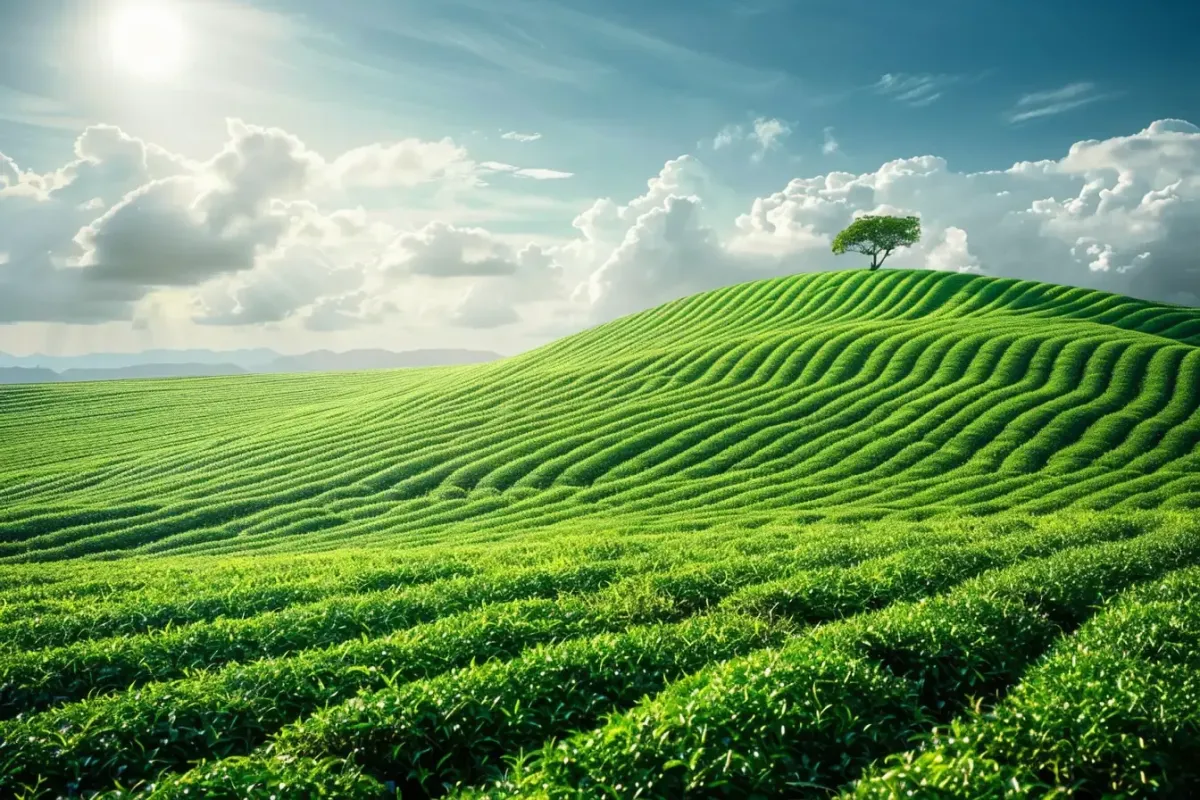By calling this number, you consent to receive a follow-up text message from Erosion Control Direct if the call is missed
By calling this number, you consent to receive a follow-up text message from Erosion Control Direct if the call is missed
The Erosion Control Direct Blog
Where Expertise Meets Innovation in Erosion Management
The Erosion Control Direct Blog
Where Expertise Meets Innovation in Erosion Management
Featured Insights
From the Experts: Navigating the Landscape of Erosion Control

Green Solutions: 8 Eco-Friendly Erosion Control Products for Sustainable Projects
Erosion control is a critical aspect of land management, construction, and environmental protection. As awareness of environmental sustainability grows, the demand for eco-friendly erosion control products has increased. These products not only prevent soil erosion but also minimize environmental impact, making them ideal for sustainable projects. This comprehensive guide explores the top eco-friendly erosion control products and techniques, providing valuable insights for land managers, contractors, and environmentalists.
Understanding the Importance of Eco-Friendly Erosion Control
Eco-friendly erosion control products offer several benefits:
Environmental Protection: These products reduce the impact on natural habitats and wildlife.
Sustainability: They are often made from renewable or biodegradable materials.
Compliance: Many eco-friendly products meet regulatory requirements for environmental protection.
Aesthetic Appeal: Natural materials blend seamlessly with the environment.
Dr. Hugh Hammond Bennett, known as the “father of soil conservation,” emphasized the importance of soil conservation:
“Out of the long list of nature’s gifts to man, none is perhaps so utterly essential to human life as soil.”
This quote underscores the critical role of soil in sustaining life and the importance of maintaining effective erosion control measures to protect this valuable resource.
Top Eco-Friendly Erosion Control Products
1. Coir Erosion Control Blankets
Coir erosion control blankets are made from coconut fibers, making them 100% biodegradable and environmentally friendly. These blankets are ideal for slope stabilization and promoting vegetation growth.
Pros:
Biodegradable and sustainable
Excellent for slope stabilization
Promotes vegetation establishment
Cons:
Can be labor-intensive to install
May require periodic replacement
2. Straw Wattles
Straw wattles are cylindrical bundles of straw used to control sediment and runoff on slopes and construction sites. They are biodegradable and provide immediate erosion control.
Pros:
Biodegradable and eco-friendly
Easy to install
Effective for sediment control
Cons:
Limited lifespan
May require regular maintenance
3. Jute Netting
Jute netting is made from natural jute fibers and is used to stabilize soil and prevent erosion. It is biodegradable and provides a natural solution for erosion control.
Pros:
Biodegradable and sustainable
Enhances soil stabilization
Promotes vegetation growth
Cons:
Limited durability in high-flow areas
May require additional anchoring
4. Wood Fiber Mulch
Wood fiber mulch is made from recycled wood materials and is used to protect soil from erosion while promoting vegetation growth. It is an eco-friendly alternative to synthetic mulches.
Pros:
Made from recycled materials
Promotes vegetation growth
Reduces soil erosion
Cons:
Requires regular replenishment
Can be washed away in heavy rain
5. Compost Filter Socks
Compost filter socks are filled with composted organic material and are used to filter sediment and pollutants from runoff. They are biodegradable and provide an eco-friendly solution for erosion control.
Pros:
Biodegradable and sustainable
Effective for sediment and pollutant filtration
Easy to install
Cons:
Limited lifespan
Requires regular maintenance
6. Native Grass Seeding
Planting native grasses is a natural and eco-friendly way to control erosion. Native grasses have deep root systems that stabilize soil and reduce runoff.
Pros:
Enhances biodiversity
Improves soil structure
Low maintenance once established
Cons:
Takes time to establish
May require irrigation in dry climates
7. Biodegradable Geotextiles
Biodegradable geotextiles are made from natural fibers such as jute, coir, or straw. They are used to stabilize soil and prevent erosion while promoting vegetation growth.
Pros:
Biodegradable and eco-friendly
Enhances soil stabilization
Promotes vegetation growth
Cons:
Limited durability in high-flow areas
May require additional anchoring
8. Living Shorelines
Living shorelines use natural materials such as plants, sand, and rocks to stabilize coastal areas and prevent erosion. They provide habitat for wildlife and enhance the natural beauty of the shoreline.
Pros:
Enhances biodiversity
Provides habitat for wildlife
Natural and sustainable
Cons:
Requires careful planning and design
May need regular maintenance
Factors to Consider When Choosing Eco-Friendly Erosion Control Solutions
Selecting the right eco-friendly erosion control solution depends on various factors specific to your project. Consider the following when making your decision:
Site Characteristics: Slope gradient, soil type, and climate all play crucial roles in determining the most effective erosion control method.
Project Duration: Is this a short-term construction project or a long-term land management solution?
Budget: Consider both initial installation costs and long-term maintenance expenses.
Environmental Impact: Some solutions are more eco-friendly than others. Consider the environmental implications of your choice.
Regulatory Requirements: Ensure your chosen solution complies with local, state, and federal regulations.
Aesthetics: If appearance is a concern, some solutions may be more visually appealing than others.
Maintenance Requirements: Consider the ongoing maintenance needs of each solution.
Conclusion
Choosing the best eco-friendly erosion control solution for your project requires careful consideration of various factors, including site characteristics, budget, and long-term goals. By understanding the strengths and limitations of each option and considering expert advice, you can make an informed decision that will effectively protect your land from erosion while minimizing environmental impact.
For more information on proper erosion control installation, be sure to review our guide on construction site erosion control. Additionally, understanding the importance of preventing soil erosion can help you make informed decisions about the most suitable approaches for your specific needs.
Q&A
Q: What is the most effective eco-friendly erosion control method?
A: The most effective method depends on your specific site conditions. For slopes, coir erosion control blankets or jute netting might be best, while compost filter socks are effective for sediment filtration. Often, a combination of methods yields the best results.
Q: How long do eco-friendly erosion control measures typically last?
A: The lifespan of eco-friendly erosion control measures varies. Biodegradable solutions like straw wattles and wood fiber mulch may last 6-12 months, while more durable options like coir blankets can last several years.
Q: Are there eco-friendly erosion control options for steep slopes?
A: Yes, eco-friendly options for steep slopes include coir erosion control blankets, jute netting, and native grass seeding. These solutions stabilize soil and promote vegetation growth.
Q: How much does eco-friendly erosion control typically cost?
A: Costs vary widely depending on the method used, site conditions, and project scale. Simple solutions like straw wattles can cost a few dollars per linear foot, while more complex solutions like living shorelines can be more expensive.
Q: Can I install eco-friendly erosion control measures myself, or do I need a professional?
A: Some simple measures like straw wattles and wood fiber mulch can be installed by homeowners. However, for larger projects or more complex solutions, it’s best to consult with a professional to ensure proper installation and effectiveness.
Q: How often should eco-friendly erosion control measures be maintained?
A: Maintenance frequency depends on the type of erosion control and site conditions. Generally, inspect after significant rainfall events and at least quarterly. Some measures may require more frequent attention.
Q: What are the benefits of using eco-friendly erosion control products?
A: Benefits include reduced environmental impact, compliance with regulations, enhanced biodiversity, improved soil health, and aesthetic appeal. Eco-friendly products are often biodegradable and made from sustainable materials.
Q: How does climate affect the choice of eco-friendly erosion control methods?
A: Climate plays a significant role. For example, areas with heavy rainfall may require more robust solutions like coir blankets, while arid regions might focus on wind erosion control using windbreaks.
Q: Are there any new technologies in eco-friendly erosion control?
A: Yes, emerging technologies include smart erosion monitoring systems, 3D-printed erosion control structures, and advanced biodegradable geotextiles with enhanced performance characteristics.
Q: How do I know if my eco-friendly erosion control measures are working effectively?
A: Signs of effective erosion control include minimal soil movement, clear runoff water, healthy vegetation growth, and stable slopes. Regular monitoring and comparison to baseline conditions can help assess effectiveness.
Get Expert Erosion Control Solutions
Implementing the right erosion control solutions is crucial for protecting your property and the environment. At Erosion Control Direct, we’re committed to providing you with top-quality products and expert advice to address your specific erosion control needs. For personalized assistance and product recommendations, don’t hesitate to reach out:
Call us at (888) 920-5005 to speak with one of our erosion control experts.
Visit our website at https://erosioncontroldirect.com to browse our product range or submit an online inquiry.
For detailed quotations, email us at [email protected].
Let us help you find the perfect erosion control solution for your project. Contact Erosion Control Direct today and take the first step towards effective soil stabilization and environmental protection.

Green Solutions: 8 Eco-Friendly Erosion Control Products for Sustainable Projects
Erosion control is a critical aspect of land management, construction, and environmental protection. As awareness of environmental sustainability grows, the demand for eco-friendly erosion control products has increased. These products not only prevent soil erosion but also minimize environmental impact, making them ideal for sustainable projects. This comprehensive guide explores the top eco-friendly erosion control products and techniques, providing valuable insights for land managers, contractors, and environmentalists.
Understanding the Importance of Eco-Friendly Erosion Control
Eco-friendly erosion control products offer several benefits:
Environmental Protection: These products reduce the impact on natural habitats and wildlife.
Sustainability: They are often made from renewable or biodegradable materials.
Compliance: Many eco-friendly products meet regulatory requirements for environmental protection.
Aesthetic Appeal: Natural materials blend seamlessly with the environment.
Dr. Hugh Hammond Bennett, known as the “father of soil conservation,” emphasized the importance of soil conservation:
“Out of the long list of nature’s gifts to man, none is perhaps so utterly essential to human life as soil.”
This quote underscores the critical role of soil in sustaining life and the importance of maintaining effective erosion control measures to protect this valuable resource.
Top Eco-Friendly Erosion Control Products
1. Coir Erosion Control Blankets
Coir erosion control blankets are made from coconut fibers, making them 100% biodegradable and environmentally friendly. These blankets are ideal for slope stabilization and promoting vegetation growth.
Pros:
Biodegradable and sustainable
Excellent for slope stabilization
Promotes vegetation establishment
Cons:
Can be labor-intensive to install
May require periodic replacement
2. Straw Wattles
Straw wattles are cylindrical bundles of straw used to control sediment and runoff on slopes and construction sites. They are biodegradable and provide immediate erosion control.
Pros:
Biodegradable and eco-friendly
Easy to install
Effective for sediment control
Cons:
Limited lifespan
May require regular maintenance
3. Jute Netting
Jute netting is made from natural jute fibers and is used to stabilize soil and prevent erosion. It is biodegradable and provides a natural solution for erosion control.
Pros:
Biodegradable and sustainable
Enhances soil stabilization
Promotes vegetation growth
Cons:
Limited durability in high-flow areas
May require additional anchoring
4. Wood Fiber Mulch
Wood fiber mulch is made from recycled wood materials and is used to protect soil from erosion while promoting vegetation growth. It is an eco-friendly alternative to synthetic mulches.
Pros:
Made from recycled materials
Promotes vegetation growth
Reduces soil erosion
Cons:
Requires regular replenishment
Can be washed away in heavy rain
5. Compost Filter Socks
Compost filter socks are filled with composted organic material and are used to filter sediment and pollutants from runoff. They are biodegradable and provide an eco-friendly solution for erosion control.
Pros:
Biodegradable and sustainable
Effective for sediment and pollutant filtration
Easy to install
Cons:
Limited lifespan
Requires regular maintenance
6. Native Grass Seeding
Planting native grasses is a natural and eco-friendly way to control erosion. Native grasses have deep root systems that stabilize soil and reduce runoff.
Pros:
Enhances biodiversity
Improves soil structure
Low maintenance once established
Cons:
Takes time to establish
May require irrigation in dry climates
7. Biodegradable Geotextiles
Biodegradable geotextiles are made from natural fibers such as jute, coir, or straw. They are used to stabilize soil and prevent erosion while promoting vegetation growth.
Pros:
Biodegradable and eco-friendly
Enhances soil stabilization
Promotes vegetation growth
Cons:
Limited durability in high-flow areas
May require additional anchoring
8. Living Shorelines
Living shorelines use natural materials such as plants, sand, and rocks to stabilize coastal areas and prevent erosion. They provide habitat for wildlife and enhance the natural beauty of the shoreline.
Pros:
Enhances biodiversity
Provides habitat for wildlife
Natural and sustainable
Cons:
Requires careful planning and design
May need regular maintenance
Factors to Consider When Choosing Eco-Friendly Erosion Control Solutions
Selecting the right eco-friendly erosion control solution depends on various factors specific to your project. Consider the following when making your decision:
Site Characteristics: Slope gradient, soil type, and climate all play crucial roles in determining the most effective erosion control method.
Project Duration: Is this a short-term construction project or a long-term land management solution?
Budget: Consider both initial installation costs and long-term maintenance expenses.
Environmental Impact: Some solutions are more eco-friendly than others. Consider the environmental implications of your choice.
Regulatory Requirements: Ensure your chosen solution complies with local, state, and federal regulations.
Aesthetics: If appearance is a concern, some solutions may be more visually appealing than others.
Maintenance Requirements: Consider the ongoing maintenance needs of each solution.
Conclusion
Choosing the best eco-friendly erosion control solution for your project requires careful consideration of various factors, including site characteristics, budget, and long-term goals. By understanding the strengths and limitations of each option and considering expert advice, you can make an informed decision that will effectively protect your land from erosion while minimizing environmental impact.
For more information on proper erosion control installation, be sure to review our guide on construction site erosion control. Additionally, understanding the importance of preventing soil erosion can help you make informed decisions about the most suitable approaches for your specific needs.
Q&A
Q: What is the most effective eco-friendly erosion control method?
A: The most effective method depends on your specific site conditions. For slopes, coir erosion control blankets or jute netting might be best, while compost filter socks are effective for sediment filtration. Often, a combination of methods yields the best results.
Q: How long do eco-friendly erosion control measures typically last?
A: The lifespan of eco-friendly erosion control measures varies. Biodegradable solutions like straw wattles and wood fiber mulch may last 6-12 months, while more durable options like coir blankets can last several years.
Q: Are there eco-friendly erosion control options for steep slopes?
A: Yes, eco-friendly options for steep slopes include coir erosion control blankets, jute netting, and native grass seeding. These solutions stabilize soil and promote vegetation growth.
Q: How much does eco-friendly erosion control typically cost?
A: Costs vary widely depending on the method used, site conditions, and project scale. Simple solutions like straw wattles can cost a few dollars per linear foot, while more complex solutions like living shorelines can be more expensive.
Q: Can I install eco-friendly erosion control measures myself, or do I need a professional?
A: Some simple measures like straw wattles and wood fiber mulch can be installed by homeowners. However, for larger projects or more complex solutions, it’s best to consult with a professional to ensure proper installation and effectiveness.
Q: How often should eco-friendly erosion control measures be maintained?
A: Maintenance frequency depends on the type of erosion control and site conditions. Generally, inspect after significant rainfall events and at least quarterly. Some measures may require more frequent attention.
Q: What are the benefits of using eco-friendly erosion control products?
A: Benefits include reduced environmental impact, compliance with regulations, enhanced biodiversity, improved soil health, and aesthetic appeal. Eco-friendly products are often biodegradable and made from sustainable materials.
Q: How does climate affect the choice of eco-friendly erosion control methods?
A: Climate plays a significant role. For example, areas with heavy rainfall may require more robust solutions like coir blankets, while arid regions might focus on wind erosion control using windbreaks.
Q: Are there any new technologies in eco-friendly erosion control?
A: Yes, emerging technologies include smart erosion monitoring systems, 3D-printed erosion control structures, and advanced biodegradable geotextiles with enhanced performance characteristics.
Q: How do I know if my eco-friendly erosion control measures are working effectively?
A: Signs of effective erosion control include minimal soil movement, clear runoff water, healthy vegetation growth, and stable slopes. Regular monitoring and comparison to baseline conditions can help assess effectiveness.
Get Expert Erosion Control Solutions
Implementing the right erosion control solutions is crucial for protecting your property and the environment. At Erosion Control Direct, we’re committed to providing you with top-quality products and expert advice to address your specific erosion control needs. For personalized assistance and product recommendations, don’t hesitate to reach out:
Call us at (888) 920-5005 to speak with one of our erosion control experts.
Visit our website at https://erosioncontroldirect.com to browse our product range or submit an online inquiry.
For detailed quotations, email us at [email protected].
Let us help you find the perfect erosion control solution for your project. Contact Erosion Control Direct today and take the first step towards effective soil stabilization and environmental protection.


Facebook